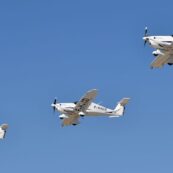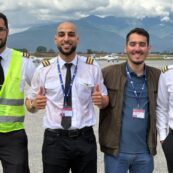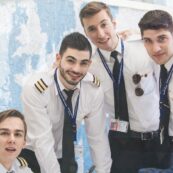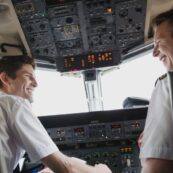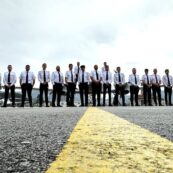Social Media: How They Are Shaping the Next Airline Pilot Generation
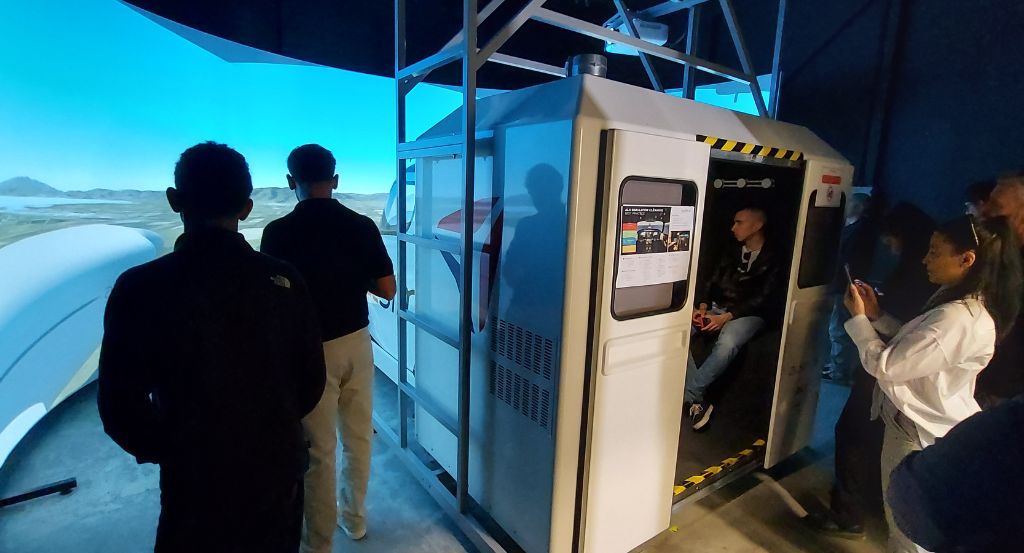
Aviation training is evolving—but not only in aircraft technology or simulator fidelity. Walk through a modern flight academy and you’ll notice something different: cadets switching seamlessly between standard operating procedures on tablets, manuals, and short-form videos tagged #pilotlife. With billions of views and more than 406,000 posts on this one hashtag, this is more than a trend—it’s a cultural shift, redefining how flying is portrayed, consumed, and even aspired to. And the question pops up: How do social media shape the next airline pilots?
Once confined to hangar discussions, cockpit moments now reach millions. Gen Z cadets—digital natives—are learning, comparing, and deciding where to train based on what they see online. Over 60% use Instagram or TikTok as search engines, making social media a decisive influence.
But what does this mean for the organisations responsible for preparing the next generation of pilots?
The answer is clear: it is no longer enough for flight training providers to excel solely within classroom walls and simulator bays. Visibility, authenticity, and adaptability have become integral to attracting and preparing future airline professionals. Egnatia Aviation has embraced this reality—not by lowering the bar, but by elevating delivery.
And yet, with visibility comes responsibility. As aviation goes viral, the challenge becomes clear: how do we ensure that popularity never outpaces the professionalism of airline pilots in social media?
Social Media To Takeoff: The Rise Of Airline Pilot Influencers
The post-pandemic surge in aviation content has propelled airline pilots and cadets into the spotlight of Social Media, such as TikTok, Instagram, and YouTube. Hashtags such as #aviation and #pilotlife have generated billions of views, transforming what was once a niche profession into a widely admired digital trend.
This shift in behaviour has also changed who tells the story of aviation—and how.
In FeedSpot’s 2025 rankings, Boeing 737 captain Maria Fagerström (~970k Instagram followers), Airbus pilot Patrick Biedenkapp (~700k), Boeing 747 first officer Captain Joe (~550k), and Dutch first officer Michelle Gooris (~320k) show that fact that you don’t need decades in the left seat to build an audience. Their appeal is relatability. Many of these creators are in their twenties or thirties, just a few years out of flight school. A cadet in Lagos or Lisbon can watch a day-in-the-life video and think, “That could be me”. Diversity among these influencers also matters—representation makes the profession feel accessible.
Flight schools are stepping into a new era of visibility, finding ways to connect with a broader audience. Some partner with well-known creators to spark interest, while others take a different route. Egnatia Aviation has chosen to shape its public presence through carefully curated, in-house content—showcasing fleet expansions, industry approvals, and milestones to its strong Instagram community. This approach ensures every post reflects the flight academy’s standards, values, and achievements, reinforcing its credibility as a training provider built on operational excellence rather than influencer reach.
The Pros And Cons Of Posting From The Flight Deck
When millions are watching, the margin for error narrows. Most airlines and Approved Training Organisations (ATOs) have clear rules on in-flight filming, often requiring written consent from the operator before any recording takes place. The reasoning is simple: personal devices in the cockpit can distract pilots, obstruct controls, or breach confidentiality. Incidents reported by the International Federation of Air Line Pilots’ Associations highlight the risks: From a camera sliding into a side-stick and triggering an uncontrolled descent, to devices blocking thrust levers during landing, or even a crushed phone releasing fumes mid-flight.
The dangers aren’t only physical. Posting unauthorised flight-deck footage or passenger information can violate company policy and damage reputations. Once content is online, it can be copied, misinterpreted, and used out of context. Several pilots have faced suspension or dismissal after management deemed their posts inappropriate or revealing.
Yet, when handled responsibly, social media can be a powerful tool. Short videos explaining instrument approaches or de‑briefing crosswind landings can help demystify complex topics for trainees. Clips showcasing the magic of flight—sunrise departures, mountainous approaches, or the camaraderie of multi‑crew flying—inspire young people who might never have considered a career in aviation.
Crucially, social media has also amplified representation in this field. Creators with large platforms can champion diversity, environmental awareness, and mental‑health initiatives, aligning with a generation that values purpose and social impact.
Eva, a female pilot influencer, is a prime example of this. She explained, “Female pilots of my generation are by no means pioneers in this profession, but because we are really out there as female pilots (on social media and featured in articles), we become more visible to the new generation; I hope it leads to more girls choosing this profession!” Seeing a role model who looks like you, demystifies the profession and signposts that the flight deck is an inclusive space.
Airlines themselves sometimes use carefully curated content to build brand loyalty and educate the travelling public about flight operations. The challenge is to harness the outreach potential of social media without diluting the professionalism that underpins aviation safety.
The opportunity is clear: harness the reach and inspiration of online platforms without compromising safety, compliance, or professionalism—the very foundations on which aviation depends.
Cadet Social Presence: Do’s, Don’ts, And Good Airmanship
Some key guidelines include:
- Avoid unsafe or questionable content – Clips showing low passes or rule-breaking can suggest poor judgment and damage career prospects.
- Speak respectfully about employers and instructors – Negative comments imply difficulty working in a team and may raise concerns about professionalism, both at academies and with airlines.
- Maintain a professional tone – Profanity, derogatory humour, or disrespect undermines the image of pilots as industry ambassadors.
- Use privacy settings wisely – Limit audiences where appropriate, but assume nothing is ever truly private; screenshots and shares can spread content beyond its original context.
- Promote aviation positively – Share achievements, highlight safety best practices, and inspire future aviators.
These recommendations align with Egnatia Aviation’s emphasis on personal development. The academy stresses that it “works on the student’s character” as much as their technical skills. Flight instructors remind cadets to think long‑term: before publishing, ask yourself whether you would be comfortable discussing the content in a job interview or accident investigation.
Educate And Inspire—Within Clear Safety Boundaries
Building your pilot brand is only the first step; the next is sharing that story responsibly. Egnatia Aviation supports cadets in building a positive public presence, but within a framework that mirrors airline standards. The expectation is clear: safety and professionalism come first, and that discipline extends naturally from the cockpit to the online world.
Structured boundaries help cadets balance creativity with responsibility. This means avoiding content that could compromise safety or confidentiality, while using official or moderated channels—such as Alumni Success Stories and the Media Archive—a photo/video gallery to showcase achievements. Mentorship also plays a role. The goal is not to limit enthusiasm, but to ensure it reflects the profession’s standards. Authentic, well-presented student stories can inspire future aviators and highlight an academy’s strengths. Done within clear boundaries, online visibility brings positive results and touches future aviators globally.
Flying in the Public Eye
As the saying goes, you can fly and go viral—if you do it right. Social media has become a powerful channel for the next generation of pilots to learn, connect, and inspire, with hashtags like #pilotlife making the cockpit dream feel tangible. But in a safety-critical industry, one ill-judged post or misplaced camera can have lasting consequences.
Egnatia Aviation offers a model: pairing high-fidelity technical training with digital tools, and shaping character alongside flying skills. The result is cadets prepared to navigate both altitudes and algorithms. The takeaway is simple—use social media to educate, motivate, and build networks, while keeping every post grounded in professionalism. Done well, your online presence can become as much an asset to your career as the hours in your logbook.
